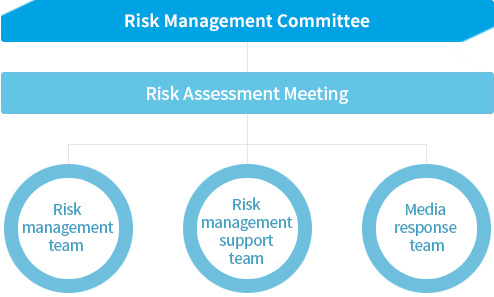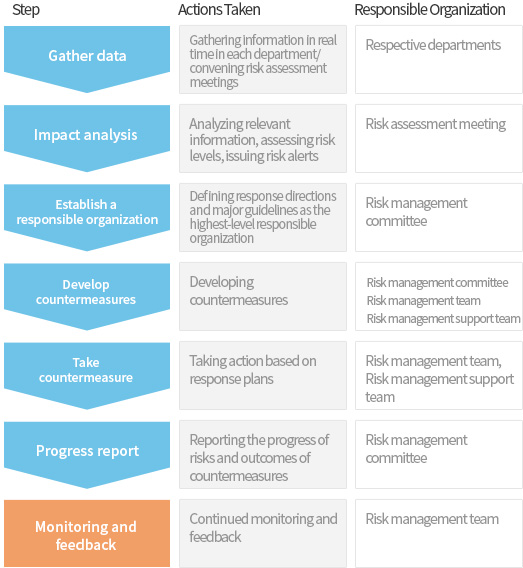Coway analyzes and manages risks that may arise in its business activities by operating the Risk Management Committee. Discussions are held in groups to draw solution measures and directions for risks that may consistently arise in the company.

Each division of Coway proactively manages major risks relating to its business activities. Financial risks, including market, credit, and liquidity risks, and non-financial risks, including compliance and policy risks, are actively managed.
In response to the risk management policy approved by the Crisis Management Committee, specific activities are carried out through each business unit. It identifies, evaluates, and prevents risks under mutual cooperation. When risks are found, the relevant information and risk level are analyzed, and a Crisis Response Team and Correspondent Organization Team It is monitored continuously even after the crisis is resolved.

In implementing sustainability management, Coway proactively identifies and regularly monitors emerging risks factors.